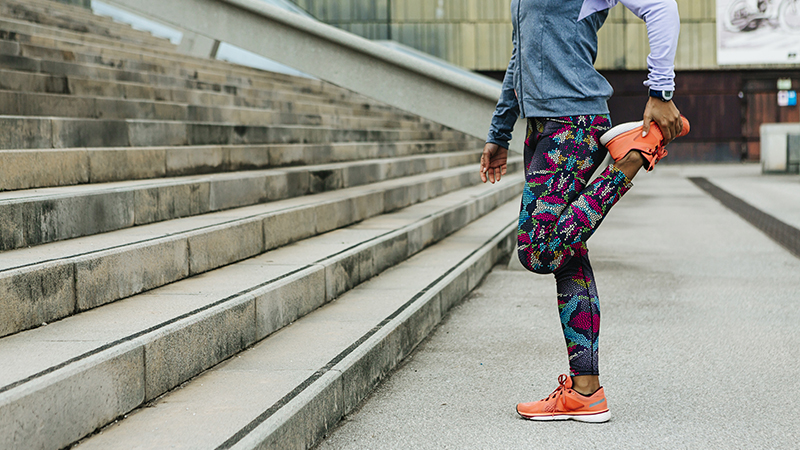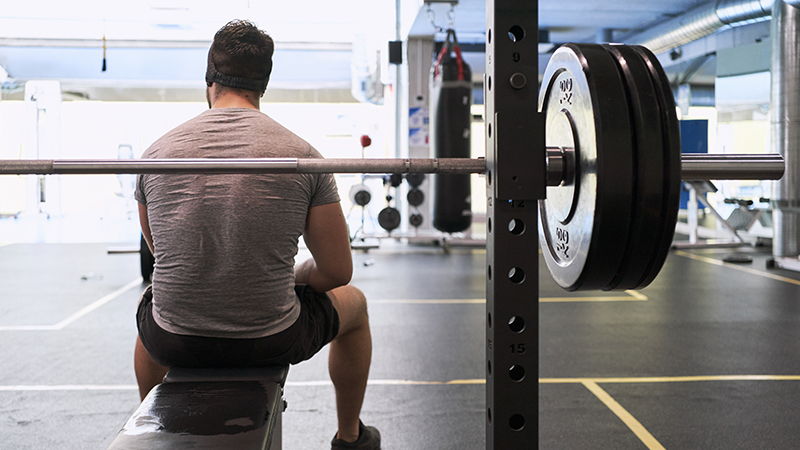Gait and Switch
You May Need to Change the Way You Run
Updated April 2022
Do you want to shave time off your splits or save yourself from shin splints?
A running gait assessment can help you learn more about inefficiencies in your running gait that may cause injury or negatively impact your performance. These inefficiencies are often hard for runners to notice because they are a normal part of running. With a running gait assessment, runners can see their form on video and learn how they need to adjust their gait.
"Due to the way our bodies are built and our lifestyles, we develop faulty movement patterns in our running gaits," says Jim Beitzel, ATC, PES, Northwestern Medicine sports performance coordinator. "A running gait assessment can help detect the compensations our body is making that may lead to tissue overload and joint breakdown over time."
Common Gait Types
Heel Striking
Researchers found that about 90% of runners in a marathon used a gait type that experts do not approve of — striking the ground heel first. They also found that elite runners tend to strike the ground with the front part of their feet. Heel striking puts more force on your heels than they can handle. Running with a heel-first gait can make you vulnerable to injuries, especially knee-related injuries.
Being aware of your gait will help improve your running longevity and prevent injury.— Jim Beitzel, ATC PES
If you are a heel striker, try moving to the midfoot strike, hitting the ground with the middle part of your feet first. With a midfoot strike pattern, the ankle absorbs more impact than the knee does, which can help you avoid knee injury.
Over-Striding
Your center of gravity is balanced when your shoulders are stacked over your hips. Often runners will reach their feet too far forward, contacting the ground ahead of their center of gravity, this is called over-striding. It keeps your body from being able to absorb shock, which can lead to injury.
You can fix over-striding by leaning your body weight forward, or taking shorter, quicker strides.
Hip Dropping (Trendelenburg Gait)
Most people are asymmetrical, meaning you favor one side over the other. If you have asymmetry in your hips, it could be Trendelenburg gait. This means your pelvis does not stay even when you run, and one hip drops lower than the other.
In this gait, your body moves side to side rather than just forward. Not only can this cause hip and lower back pain, but it can also lead to deterioration of the hip joint.
If you drop your hip when you run, it's a sign that you need to strengthen your hip abductors (muscles on the sides of your hips).
Sitting Back (Poor Posterior Chain Drive)
Your posterior chain is made up of the powerful muscles on the backside of your body: glutes, hamstrings and calves. Most people do not engage these muscles enough when they run. This forces the quadriceps to work harder, which can tilt the pelvis forward and cause low back pain.
If you have poor posterior chain drive, strengthen the backside of your body. Focus on activating your glutes, hamstrings and calves when you run.
"If you feel like your running is not up to speed, or you are always dealing with soft tissue or stress fracture issues, a running gait analysis could transform your running performance," says Beitzel. "Being aware of your gait will help improve your running longevity and prevent injury."





